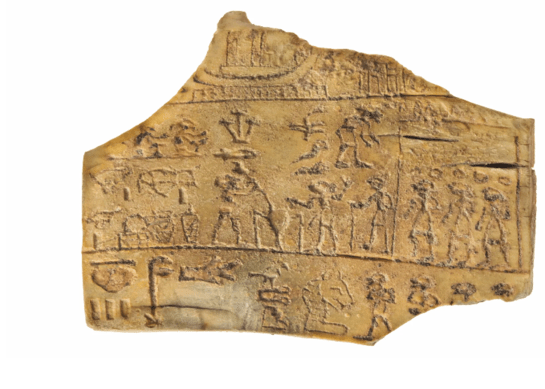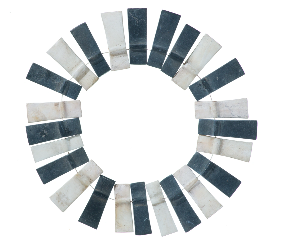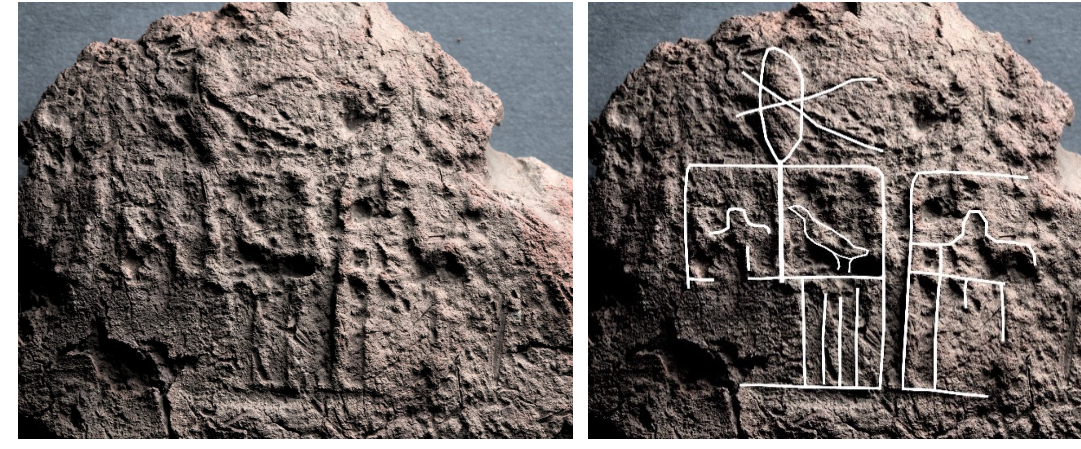University of Liverpool has the inside story of world’s first historically recorded woman
Published on

This International Women’s Day, (Wednesday 8 March) researchers at the University of Liverpool are revisiting the first historically attested woman in the world and sharing what their archaeological research can tell us about her fascinating story as potentially the first recorded female ruler.
Parts of the tomb where the woman, Neith-hotep, was laid to rest more than 5,000 years ago are currently displayed at the University of Liverpool’s Garstang Museum of Archaeology.
[caption id="attachment_110732" align="aligncenter" width="290"] ivory and slate bracelet found in Neith-Hotep's tomb[/caption]
ivory and slate bracelet found in Neith-Hotep's tomb[/caption]
She was the wife of King Narmer and the mother of King Hor-Aha, the rulers traditionally credited with unifying ancient Egypt into a single nation.
Professor John Garstang re-excavated her large tomb in Naqada, in Upper Egypt in 1904, following a previous attempt in the late 1800s, and found hundreds of inscriptions and objects.
Some of these inscriptions included a serekh: a rectangular symbol, topped by a god (in most cases the falcon god Horus), in which the name of the king was traditionally written.
[caption id="attachment_110733" align="aligncenter" width="454"] Mud seal from a storage jar, with a stamped impressions of the name Neith-hotep, in a serekh[/caption]
Mud seal from a storage jar, with a stamped impressions of the name Neith-hotep, in a serekh[/caption]
Using reflectance transformation imaging (RTI) on these often faded and difficult to read inscriptions, archaeologists at Liverpool found Neith-hotep’s name written in the form of a serekh, indicating that she could have actually been the first female pharaoh and not just King Narmer’s consort.
Dr Gina Criscenzo-Laycock, Curator at the University of Liverpool’s Garstang Museum, said: “Finding the serekh of Neith-hotep from her tomb is really fascinating – it indicates that she may not have just been the queen consort but may have been a ruler in her own right of one of the proto Kingdoms of Egypt that existed just before the unification.
“As a society that is very conscious of gender equality, is it possible that we imagine it where it may not have existed in the ancient world? The serekh of Neith-hotep may simply be a quirk of iconography, in a system that was still developing.
“Or are we only questioning her place in history as a ruler because we know she was a woman? Every other serekh has automatically been interpreted as naming a ruler, even when nothing else is known about the person named. Why are we suddenly wary of doing the same for Neith-hotep, simply because we know she was a woman?
[caption id="attachment_110734" align="alignnone" width="440"] Ivory figurine found in Neith-hotep's tomb, such figurines awere commonly found in ancient Egypt[/caption]
Ivory figurine found in Neith-hotep's tomb, such figurines awere commonly found in ancient Egypt[/caption]
“If you’re interested in finding out more about Neith-hotep and Ancient Egyptian history, do come and visit us at the Garstang Museum!”
You can read a full blog by Gina about the history of Neith-hotep here.
As well as Neith-hotep, visitors to the Garstang Museum can also see an Egyptian mummy in the Ancient Egyptian afterlife gallery. The Museum, situated at 14 Abercromby Square, is open on Wednesdays and Thursdays between 10am and 4pm and is free to enter. Find out more here.